3D rendering software plays a crucial role in the fields of design and architecture, transforming ideas into photorealistic visualizations.
These tools enable designers and architects to bring their projects to life before their physical realization, offering a precise and detailed vision of the final appearance of a space or product.
New Feature 💡
Thanks to artificial intelligence, it is now possible to generate unlimited realistic interior renderings from a single photo in just a few seconds.
Discover our AI-powered 3D rendering tool for interiors and exteriors here
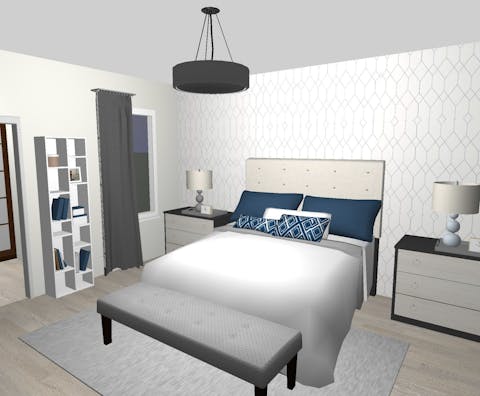
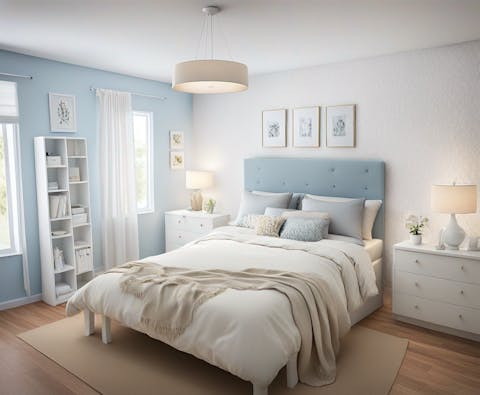
What is 3D rendering software?
3D rendering software is a computer application used to transform 3D models into realistic images or animations. The process starts with the creation of 3D models in Computer-Aided Design (CAD) software such as ArchiCAD.
These models are then enhanced with textures, lighting, and perspectives, resulting in renderings that can be used for virtual architectural tours or project presentations.
Types of 3D Rendering
There are three main 3D rendering techniques:
- Solid Rendering: Uses simple geometric shapes to build more complex structures, ideal for schematic representations.
- Surface Rendering: Employs a polygonal mesh to create detailed and realistic renderings, often used for high-quality visuals.
- Wireframe Rendering: Represents 3D models solely by their edges and vertices, useful for visualizing the underlying structure of an object.
Importance of 3D Rendering in Interior Design
3D rendering in interior design offers a multitude of benefits. It enables effective communication of ideas, minimizing misunderstandings and providing a clear vision of the final project.
Photorealistic renderings also help in making informed decisions about materials, colors, and layouts, and can include elements that make scenes more lively and realistic.
Selecting the Right 3D Rendering Software
Several key factors should be considered when choosing 3D rendering software for interior design.
These factors include quality and realism, ease of use and user interface, available tools, compatibility with other design software, as well as speed and efficiency.
1. Quality and Realism of the Rendering
One of the primary factors to consider when selecting 3D rendering software for interior design is the quality and realism of the rendered images, such as room or bathroom renderings.
Look for software that offers advanced rendering capabilities, such as realistic lighting effects, accurate material textures, and realistic representations of architectural elements.
Creating visually impressive and immersive renderings is crucial for presenting designs to clients and stakeholders.
2. Ease of Use and User Interface
Another important aspect is the ease of use and user interface of the interior design software. Look for intuitive and user-friendly interfaces that simplify the task and allow for effortless navigation within the software.
A well-designed user interface can save time and increase productivity, especially for those who may not have extensive technical knowledge.
3. Available Features and Tools
Consider the range of tools the software offers for interior rendering services. Look for software that provides a comprehensive set of modeling, texturing, lighting, and camera control tools for visual presentation.
Additionally, pre-built libraries of furniture and accessory renderings can enhance efficiency and speed up the task.
4. Compatibility with Other Software
Ensure that the rendering software is compatible with commonly used design software in the interior rendering services industry.
Seamless integration with software such as CAD programs and 3D modeling tools allows for smooth data transfer and collaboration between different software platforms.
5. Rendering Speed and Efficiency
The rendering speed and efficiency of the software can significantly impact project timelines. Look for software with advanced rendering algorithms and hardware acceleration to deliver fast and efficient rendering.
Fast rendering speeds allow for quicker iterations and accelerated decision-making.
Consider these key factors when selecting 3D interior rendering software to ensure it meets your specific needs and provides the necessary tools to produce stunning visual presentations of your designs.
The 12 Best 3D Rendering Software for Interior and Exterior Design
Discover the 10 best options for 3D rendering software that produce realistic and captivating renderings of their designs, enhancing their workflow and allowing them to effectively communicate their vision to clients.
Here is a summary table of 3D rendering software for interior and exterior design, including their main features, advantages, disadvantages, costs, and ideal users:
| Software | Main Advantages | Main Disadvantages | Approximate Annual Cost | Ideal For |
|---|---|---|---|---|
| 3D Studio Max | Realistic visualization, detailed modeling, efficiency | Learning curve, cost, hardware requirements | $2,407 | 3D studios, professionals, photorealism |
| Lumion | Real-time 3D visualization, user-friendly interface | Limited customization, hardware requirements | $810 – $1,620 | Professional designers, quick deliveries |
| MyArchitectAI | Fast rendering (<10 sec), ease of use, automatic lighting and texturing, cloud-based accessibility on any device | Limited free renders, dependency on a reliable internet connection | $348 ($29/month) | Architects, interior designers seeking quick, high-quality renders |
| Revit | BIM integration, parametric modeling | Limited rendering features, need for plugins | $3,616 | Engineers, precision before rendering |
| V-Ray | Impressive renders, realism | Learning difficulty, reliance on tutorials | $689 | Visualization professionals, architects |
| Foyr Neo | Speed, accessibility, low hardware requirements | Customization limitations, internet dependency | $642 ($54/month) | Solo entrepreneurs, photorealistic renderings |
| Maxwell Render | Ease of use, lighting quality | Variable quality, slow SSS rendering, file management | $813 | Architects, interior designers, high-quality renders |
| Corona Renderer | Reduced learning curve, affordable cost | CPU dependency, limited software availability | $457 | Designers using Cinema4D or 3ds Max |
| Octane Render | GPU utilization, exceptional quality | Customized Blender version, limited free version | $261 ($22/month) | Blender users, high-quality renderings |
| Unreal Engine | Free, real-time rendering, VR | Learning curve, not for all projects | Free | Innovative architects and designers, VR |
| KeyShot | Ease of use, photorealistic renders | Limitations for wide views, cost | $1,296 | Product shots, small interior scenes |
| Enscape | Fast rendering, VR experiences, ease of use, enhances collaboration | Functional limitations, customer support challenges | $1,007 | Architects, interior designers, visualization professionals seeking integration and efficiency |
1. 3D Studio Max
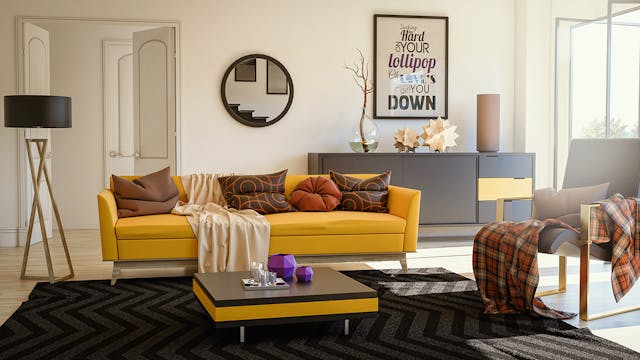
3D Studio Max is a highly appreciated choice and an excellent option for 3D interior design and rendering software. It is favored by many rendering companies for creating highly realistic renderings at a professional level. Here are some advantages and disadvantages:
Advantages of 3D Studio Max:
- Realistic Visualization: Advanced rendering capabilities for realistic images, with material and lighting simulation.
- Detailed Modeling: Wide range of modeling tools to create precise 3D models of interior elements.
- Workflow Efficiency: Set of tools that simplify the design process, from importing CAD files to managing complex scenes.
- Customization and Plugins: Allows customization with scripts, plugins, and extensions to enhance functionalities dedicated to interior design.
Disadvantages of 3D Studio Max:
- Learning Curve: Complexity and learning difficulty, requiring time and effort to master the software.
- Cost: Substantial investment needed, including the initial purchase and subscription fees for updates.
- Hardware Requirements: Requires a powerful computer, which can incur additional hardware costs.
- Complexity: The extensive set of tools and features can be overwhelming for beginners.
Ideal for:
3D studios, professionals, and individuals targeting a high level of photorealism in their interior design and rendering projects.
Cost:
3D Studio Max offers different pricing options tailored to various needs and budgets. Opting for an annual subscription, the cost is €2,226 per year for one user, estimated VAT included. This represents significant savings compared to the monthly subscription, which is €276 per month.
2. Lumion
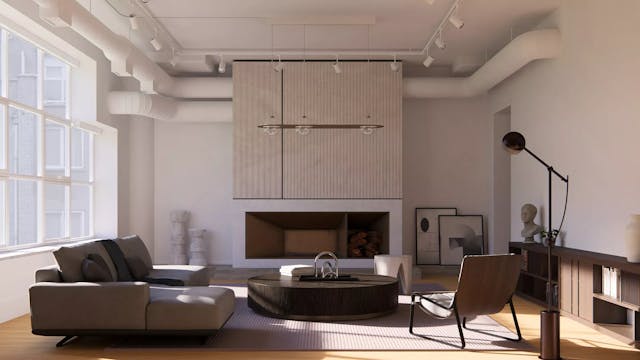
Lumion has become an essential software in the fields of architecture, urban planning, and interior design, recognized for its ease of use, extensive resource library, and real-time rendering capabilities.
Advantages of Lumion for interior designers:
- Real-time 3D Visualization: Allows for the creation of realistic and immersive 3D visualizations in real-time, offering an accurate preview of the final project render.
- User-friendly Interface: Its ease of learning and use makes the creation of visually impressive interior scenes accessible to all, without the need for advanced technical skills.
- Extensive Asset Library: Includes a wide range of high-quality 3D models, materials, and effects, enabling high customization and detail in scenes.
- Fast Rendering Times: Known for its speed, Lumion helps produce high-quality renders in a short time, ideal for projects with tight deadlines.
Disadvantages of Lumion for interior designers:
- Limited Design Customization: Predefined options may restrict customization for projects requiring unique elements.
- Hardware Requirements: Requires a powerful computer system, which can represent a significant additional cost.
- Learning Curve: Although the interface is user-friendly, mastering all functionalities to reach a professional level may require a time investment.
- Limitations for Complex Animations: Less suited for projects requiring detailed animations or advanced dynamic interactions.
Ideal for:
Design and architecture professionals looking to quickly produce quality renders, thanks to an intuitive interface and a rich resource library.
Cost:
Lumion offers two main subscription plans: the Standard version at $68/month (billed annually at $810) and the Pro version at $136/month (for an annual total of $1,620), each offering different levels of functionalities and resources.
3. MyArchitectAI
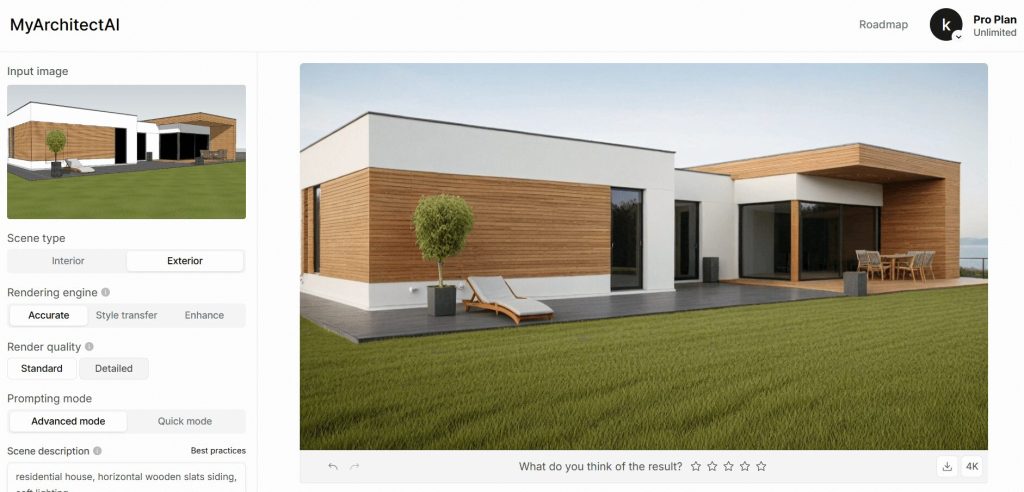
MyArchitectAI is an AI rendering tool praised by architects and interior designers for its speed, ease of use, and high compatibility.
This renderer can visualize any interior or exterior scene in under 10 seconds without sacrificing quality. The tool handles all lighting and texturing for you, saving you hours on every scene. As a cloud-based renderer, MyArchitectAI runs in your browser, so you can use it on any device (even a Mac or an iPad) without having to worry about complex installations or needing high-end hardware.
You can get 10 free renders each month, and for $29/month, you’ll get access to unlimited rendering.
4. Revit
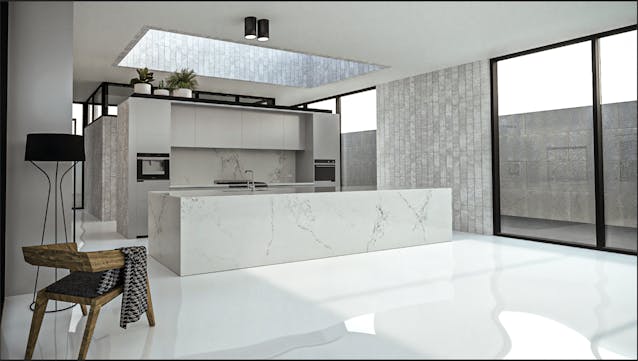
Revit is an essential Building Information Modeling (BIM) software, appreciated for its integrated approach to design and construction project management.
Advantages of Revit for 3D rendering:
- BIM Integration: Facilitates the creation of intelligent 3D models, enhancing coordination, documentation, and visualization with up-to-date information.
- Parametric Modeling: Uses intelligent objects for efficient creation and modification of 3D models, ensuring consistency and accuracy in renderings.
- Integrated Rendering Engine: Allows basic renders directly within Revit without the need for external plugins, simplifying the rendering workflow.
Disadvantages of Revit for 3D rendering:
- Limited Advanced Rendering Features: The integrated engine may lack certain features compared to specialized rendering software, sometimes necessitating third-party plugins.
- External Rendering Plugins: For advanced rendering features, adding plugins like V-Ray or Enscape may be necessary, adding costs and complicating the process.
Ideal for:
Engineers and professionals seeking high accuracy in their projects, with rendering as a secondary aspect. Less suited for 3D artists and those seeking marketing-quality renders.
Cost:
Revit offers flexible pricing options, with an annual subscription at $3,640 for one user, more economical than the monthly option at $452.
5. V-Ray
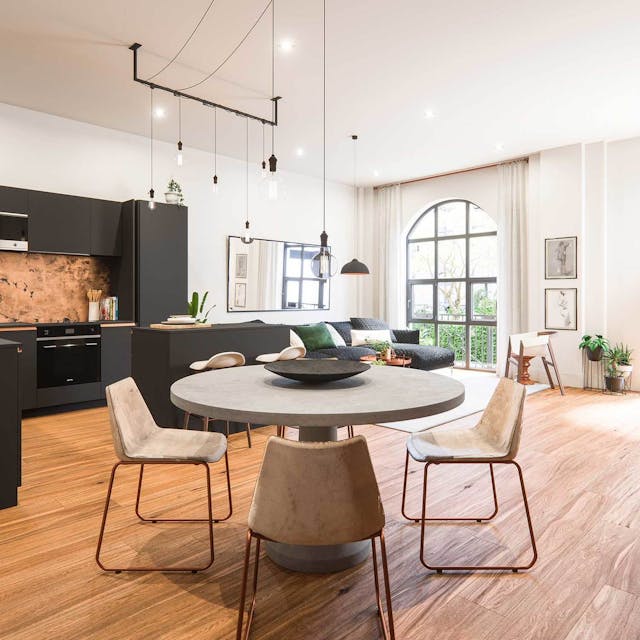
V-Ray is a top choice rendering engine for professionals, renowned for its advanced features and high-quality renders. It offers advanced functionalities like global illumination and animation capabilities. V-Ray also has a GPU-accelerated rendering engine, allowing for fast rendering times, even for complex projects.
Advantages:
- Known for its impressive renders and ability to produce realistic images for international clients, adding unparalleled value to projects.
- Compatible with all major modeling software, offering great flexibility in design workflows.
Disadvantages:
- Can have a steep learning curve due to its feature-rich interface and the complexity of some functionalities.
- Often requires consulting numerous tutorials to fully master the software and understand the impact of each function on the final renders.
Ideal for:
Visualization professionals, architects, and interior designers seeking superior quality renders and willing to invest time to master a tool with advanced capabilities.
Price:
V-Ray offers a Premium plan at $57/month, with annual billing amounting to $680, allowing for a 50% saving.
6. Foyr NEO

Foyr Neo is appreciated for its speed and ease of use, ideal for individual entrepreneurs seeking photorealistic 3D renders.
Advantages:
- Allows the creation of 2D floor plans and real-time customization of 3D designs, even on systems with only 4GB of RAM.
- Offers advanced features like one-click 3D walkthroughs for quick and comprehensive animation of the design.
Disadvantages:
- May have limitations in advanced customization options compared to other more specialized software.
- Requires a stable Internet connection for cloud rendering, which can be an issue in areas with poor connectivity.
Ideal for:
The individual entrepreneur looking to quickly produce high-quality photorealistic 3D renders without needing to invest in high-end computer equipment.
Price:
Foyr Neo offers a free 14-day trial, followed by a subscription at $53/month, making this software accessible to both large enterprises and individual entrepreneurs.
7. Maxwell Render

Maxwell Render stands out as a standalone rendering engine, renowned for its hyper-photorealistic results and ease of use in interior projects. It offers network rendering, allowing users to distribute the rendering process to speed up the overall rendering time.
Advantages:
- Speed and ease of use, with a quick learning curve, making Maxwell Render accessible even for beginners.
- Great flexibility in design with the ability to easily change and customize materials.
- Features such as Maxwell IPR and Maxwell FIRE for quick interactive previews, useful for adjusting renders in real-time.
- Highly appreciated shading and lighting quality, minimizing issues like global illumination flickering.
Disadvantages:
- The render quality may sometimes not meet the standards of V-Ray, according to some users.
- Sub-surface scattering (SSS) rendering can be slow, although improvements are expected.
- The software can show slowdowns for complex tasks and has limitations for non-photorealistic rendering (NPR).
- The scene manager can generate numerous cache files, which can be problematic for large projects.
Price:
Maxwell Render offers the “Maxwell | Bundle” starting at $810, including all Maxwell plugin integrations and Maxwell | Studio.
Ideal for:
Architects and interior designers seeking hyper-photorealistic high-quality renders. Maxwell Render is particularly suited for those who value simplicity and a quick learning curve, as well as flexibility in design customization.
8. Corona Renderer
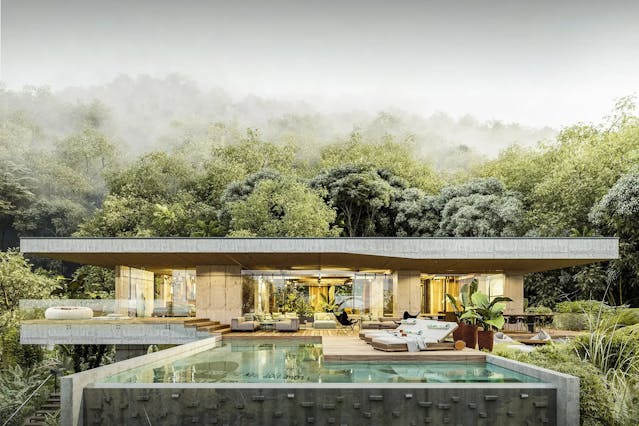
Corona Renderer is a popular rendering software for interior projects, offering an intuitive interface and the ability to produce high-quality images with ease.
Advantages:
- Reduced learning curve, making Corona Renderer accessible for those transitioning from other rendering engines.
- Advanced sunlight and lighting configuration, along with a wide range of customizable materials, offering great creative flexibility.
- More affordable than other options on the market while providing comparable or even superior results.
Disadvantages:
- CPU-dependent rendering, requiring a powerful processor for optimal rendering times.
- Lack of GPU utilization in some cases, potentially limiting rendering speed.
- Limited availability to Cinema4D and 3ds Max users, which may restrict access for users of other platforms.
Ideal for:
Design and architecture professionals seeking an intuitive rendering engine to create ultra-realistic visualizations. Particularly suited for Cinema4D and 3ds Max users looking for high-quality renders with reduced setup times.
Price:
The “Corona Premium” subscription is offered at $38/month with an annual option, allowing a 42% saving, for an annual cost of $460.
9. Octane Render

Octane Render leverages GPU computers to offer exceptional quality renders, known for its speed and efficiency in handling complex scenarios.
Advantages:
- Allows for fast, high-quality renders through GPU acceleration, offering high rendering speeds.
- Cost-effective solution for superior quality renders, with great flexibility and customization via scripting and add-ons.
- Fully spectral rendering engine ensuring accurate color calculations, beyond the limitations of the RGB space.
Disadvantages:
- Requires a customized version of Blender for integration, limiting its use to stable Blender versions and delaying access to updates.
- The free version is limited to using a single GPU, which can reduce performance for more ambitious projects.
Ideal for:
Visualization professionals, 3D artists, and designers seeking high-quality renders with short turnaround times. Particularly suited for Blender users willing to use a specific version to benefit from GPU acceleration.
Price:
Octane Render is available as an annual subscription at $22/month.
10. Unreal Engine
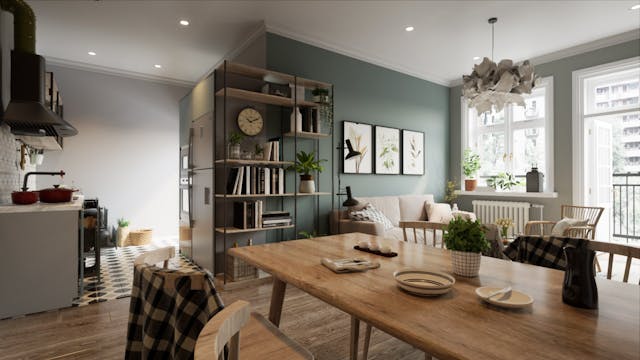
Unreal Engine is a powerful real-time rendering platform, widely used in the gaming industry but also applicable to interior design.
Advantages:
- Facilitates the creation of interactive and immersive virtual experiences with real-time visualization and supports VR integration for more compelling presentations.
- Free access for architects and designers, especially with Unreal Engine 5, offering a powerful and accessible tool for various industries including film, the metaverse, and design.
- Includes features like real-time rendering, advanced lighting and shading effects, material customization, and dynamic simulations.
Disadvantages:
- May not be suitable for everyone, particularly those with specific architecture and design needs who might find the tool complex.
- Has a learning curve, especially for users unfamiliar with real-time rendering software or game development tools.
Ideal for:
Architects and designers seeking interactive and immersive design visualizations, particularly those interested in using VR. Suitable for professionals willing to train on a tool initially intended for the gaming sector but offering advanced possibilities in architectural visualization.
Price:
Unreal Engine is offered for free to architects and designers, making this tool very attractive for professionals and studios looking to minimize costs.
11. KeyShot
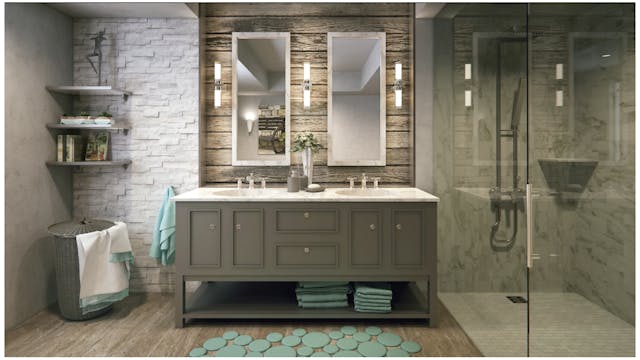
KeyShot is a 3D rendering software known for its ease of use and photorealistic renders.
Advantages:
- Allows for the creation of realistic and striking renders with minimal effort, providing quick visualization of design changes.
- Supports the creation of animations and walkthroughs, enhancing visual presentations with features like real-time rendering and advanced editing of materials and textures.
Disadvantages:
- May not achieve the same level of lighting realism as some specialized software like 3ds Max, due to differences in light reflection calculations.
- Less ideal for wide-angle shots in interior design or architecture, where other software might offer more convincing renders.
Ideal for:
Professionals creating in situ interior scenes for clients, or for use in product promotion. Suitable for users seeking a versatile tool for detailed renders of furniture and products in an interior setting.
Price:
KeyShot offers various pricing options, with KeyShot Pro at $99.00/month (billed annually for a total of $1,188.00). KeyShot Web, for online 3D visualization, is available at $39.00/month. The network rendering service is offered at $32.00/month for 32 cores, and the NX plugin for NX integration with KeyShot is $29.00/month.
12. Enscape

Enscape is a real-time rendering plugin that integrates seamlessly with the most commonly used design software, offering instant visualization of projects.
Advantages:
- Facilitates the rapid generation of high-quality renders and visualizations, allowing real-time exploration of different design options.
- Offers immersive virtual reality (VR) experiences, enhancing collaboration and communication within design teams.
- Valued for its ease of use, limited training requirements, and the ability to share virtual walkthroughs with clients via the web.
- Stands out for its speed and accuracy, contributing to a better visual understanding of design solutions and the identification of potential conflicts.
Disadvantages:
- Limitations may be encountered in lighting functionalities, material mapping, and animation.
- Despite its ease of use, some users have expressed difficulties with customer support, particularly in terms of communication with the sales team and billing management.
Ideal for:
Perfectly suited for architects, interior designers, and visualization professionals seeking a fast and accurate rendering solution that integrates easily with standard design tools. Highly recommended for those wanting to offer immersive virtual reality (VR) experiences to their clients and foster collaboration within project teams.
Price:
Enscape is offered at an annual price of $1,000.00
Conclusion
Interior design heavily relies on 3D rendering software because they provide efficient tools for visualizing and presenting design concepts. With realistic lighting, customizable materials, and efficient workflows, these software alternatives allow designers to create stunning, realistic interior representations.
By integrating these technologies into their processes, designers can enhance their visual presentations, optimize workflows, and impress clients with immersive and realistic renders.
FAQ
What is 3D rendering software for interior design?
3D rendering software for interior design is a computer tool that produces realistic and aesthetic renders of interior spaces.
How do 3D rendering software benefit interior design professionals?
They allow them to make informed decisions, effectively visualize and explain design concepts, and realistically present their designs to clients.
Can 3D rendering software produce realistic images for interior rendering services?
Modern 3D rendering tools can create extremely realistic representations of interior spaces. The ability of designers to produce realistic renders of their concepts helps clients visualize the final product more clearly.
How do 3D interior rendering software improve the design process?
3D rendering software simplifies the process by visually representing their ideas before construction or implementation.
